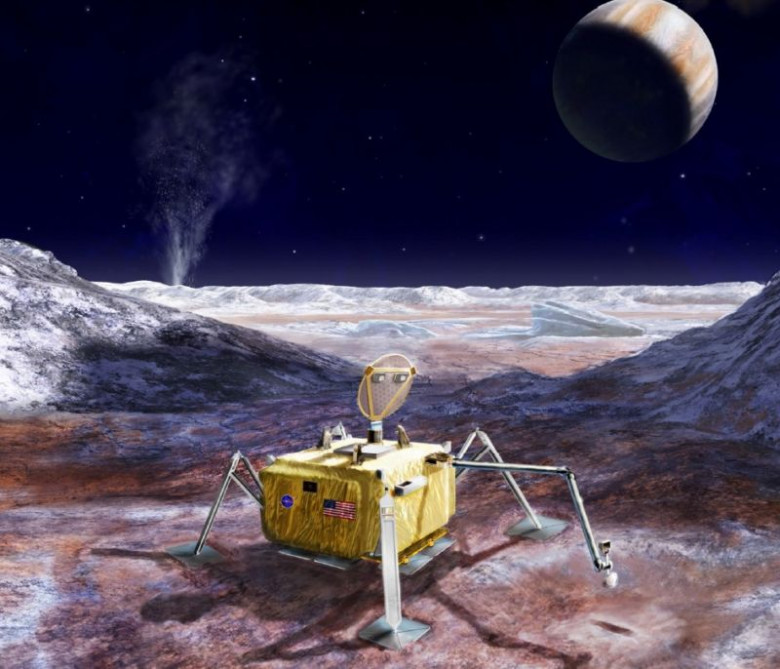Inside NASA’s daring $8 billion plan to finally find extraterrestrial life
DEEP IN THE SOLAR SYSTEM—A darkness has spread over the grim, airless field of ice that threatens to swallow us. Night has come to the nightmare glacier. But then we see the shiny spacecraft, with its four gangly legs extending outward to find purchase on the jagged ice. Within, scientific instruments begin to blink on, one by one. Soon, they will start sniffing for any hint of life on this most alien and mysterious of worlds in the Solar System: the Jovian moon Europa.
Through the HoloLens each of us wears, we watch this simulation of what might happen about 15 years from now on the icy, forbidding moon. The otherworldly illusion is shattered when a voice booms out; it's John Culberson, a conservative Republican politician from Texas. He wants to know what happens if one of the blinking instruments fail. Not to worry, he is told, all of the spacecraft systems are redundant. “Good,” Culberson replies. “The immensity of what you’re doing is too important in human history. You don’t want to miss this chance.”
Europa truly does represent a singular chance. Crossing 800 million kilometers with a sizable, robust payload will require vast sums of money—there won’t be a second chance. But Europa represents a gamble in another sense, too. No one knows whether NASA will discover a frozen, dead world far from the Sun or if the organization will make the most profound of discoveries just below the ice.










































































